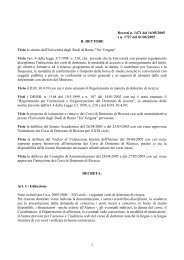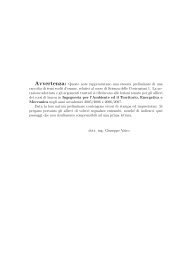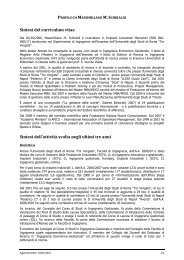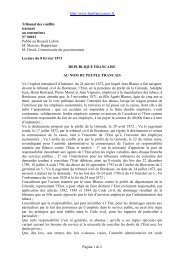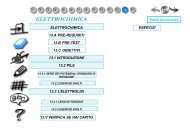Puneet Khandelwal, Soman N. Abraham and Gerard Apodaca
Puneet Khandelwal, Soman N. Abraham and Gerard Apodaca
Puneet Khandelwal, Soman N. Abraham and Gerard Apodaca
You also want an ePaper? Increase the reach of your titles
YUMPU automatically turns print PDFs into web optimized ePapers that Google loves.
Am J Physiol Renal Physiol 297: F1477–F1501, 2009.<br />
First published July 8, 2009; doi:10.1152/ajprenal.00327.2009.<br />
Cell biology <strong>and</strong> physiology of the uroepithelium<br />
<strong>Puneet</strong> <strong>Kh<strong>and</strong>elwal</strong>, 1 <strong>Soman</strong> N. <strong>Abraham</strong>, 2 <strong>and</strong> <strong>Gerard</strong> <strong>Apodaca</strong> 1,3<br />
1 Laboratory of Epithelial Cell Biology <strong>and</strong> Renal Electrolyte Division, Department of Medicine, <strong>and</strong> 3 Department of Cell<br />
Biology <strong>and</strong> Physiology, University of Pittsburgh, Pittsburgh, Pennsylvania; <strong>and</strong> 2 Departments of Pathology, Molecular<br />
Genetics <strong>and</strong> Microbiology, <strong>and</strong> Immunology, Duke University, Durham, North Carolina<br />
Submitted 10 June 2009; accepted in final form 30 June 2009<br />
<strong>Kh<strong>and</strong>elwal</strong> P, <strong>Abraham</strong> SN, <strong>Apodaca</strong> G. Cell biology <strong>and</strong> physiology of the<br />
uroepithelium. Am J Physiol Renal Physiol 297: F1477–F1501, 2009. First published<br />
July 8, 2009; doi:10.1152/ajprenal.00327.2009.—The uroepithelium sits at<br />
the interface between the urinary space <strong>and</strong> underlying tissues, where it forms a<br />
high-resistance barrier to ion, solute, <strong>and</strong> water flux, as well as pathogens.<br />
However, the uroepithelium is not simply a passive barrier; it can modulate the<br />
composition of the urine, <strong>and</strong> it functions as an integral part of a sensory web in<br />
which it receives, amplifies, <strong>and</strong> transmits information about its external milieu to<br />
the underlying nervous <strong>and</strong> muscular systems. This review examines our underst<strong>and</strong>ing<br />
of uroepithelial regeneration <strong>and</strong> how specializations of the outermost<br />
umbrella cell layer, including tight junctions, surface uroplakins, <strong>and</strong> dynamic<br />
apical membrane exocytosis/endocytosis, contribute to barrier function <strong>and</strong> how<br />
they are co-opted by uropathogenic bacteria to infect the uroepithelium. Furthermore,<br />
we discuss the presence <strong>and</strong> possible functions of aquaporins, urea transporters,<br />
<strong>and</strong> multiple ion channels in the uroepithelium. Finally, we describe<br />
potential mechanisms by which the uroepithelium can transmit information about<br />
the urinary space to the other tissues in the bladder proper.<br />
uroplakins; exocytosis; endocytosis; tight junctions; stretch; urothelium<br />
THE UROEPITHELIUM IS AN EPITHELIAL tissue that lines the distal<br />
portion of the urinary tract, including the renal pelvis, ureters,<br />
bladder, upper urethra, <strong>and</strong> gl<strong>and</strong>ular ducts of the prostate.<br />
Functionally, it forms a distensible barrier that accommodates<br />
large changes in urine volume while preventing the unregulated<br />
exchange of substances between the urine <strong>and</strong> the blood<br />
supply. This task is accomplished by specializations of the<br />
outermost umbrella cell layer, including high-resistance tight<br />
junctions (2, 135, 210), an apical glycan layer (94), <strong>and</strong> an<br />
apical membrane with a distinctive lipid <strong>and</strong> protein composition<br />
(86, 92, 151), <strong>and</strong> the ability of the umbrella cells to alter<br />
their apical surface area by exocytosis <strong>and</strong> endocytosis (10,<br />
117, 132, 205). In addition to its role as a barrier, the uroepithelium<br />
can modulate the movement of ions, solutes, <strong>and</strong> water<br />
across the mucosal surface of the bladder (133, 151, 175, 189,<br />
191, 192, 234). Furthermore, the uroepithelium releases various<br />
mediators <strong>and</strong> neurotransmitters, including ATP, adenosine,<br />
<strong>and</strong> ACh, from its serosal surface, which may allow the<br />
epithelium to transmit information about the state of the mucosa<br />
<strong>and</strong> bladder lumen to the underlying tissues, including<br />
nerve processes, myofibroblasts, <strong>and</strong> musculature (11, 24).<br />
Thus the uroepithelium is a dynamic tissue that not only<br />
responds to changes in its local environment but can also relay<br />
this information to other tissues in the bladder. In this review,<br />
we summarize recent findings regarding the cell biology <strong>and</strong><br />
function of the uroepithelium, with particular emphasis on the<br />
outermost umbrella cell layer.<br />
Address for reprint requests <strong>and</strong> other correspondence: G. <strong>Apodaca</strong>, Univ. of<br />
Pittsburgh, 980 Scaife Hall, 3550 Terrace St., Pittsburgh, PA 15261 (e-mail:<br />
gla6@pitt.edu).<br />
CHARACTERISTICS OF THE UROEPITHELIUM, ITS STEM<br />
CELLS, AND ITS REGENERATION<br />
Review<br />
The uroepithelium, or urothelium, is composed of umbrella,<br />
intermediate, <strong>and</strong> basal cell layers (Fig. 1). Early studies<br />
reported that thin cytoplasmic extensions connect the various<br />
cell layers to the basement membrane (163), suggesting that<br />
the uroepithelium is pseudostratified. However, subsequent<br />
studies used serial sectioning <strong>and</strong> electron microscopy to show<br />
that the uroepithelium is stratified <strong>and</strong> that cytoplasmic extensions<br />
are rarely observed in the intermediate cell layers, but<br />
never in the umbrella cell layer (102, 178). We concur with Wu<br />
et al. (230) that the term transitional epithelium, which is often<br />
used in histology textbooks <strong>and</strong> connotes a pseudostratified<br />
epithelium, be discarded <strong>and</strong> that urothelium/uroepithelium be<br />
used in its place.<br />
Umbrella cell layer. Umbrella cells (also known as facet<br />
cells or superficial cells) are a single layer of highly differentiated<br />
<strong>and</strong> polarized cells that have distinct apical <strong>and</strong> basolateral<br />
membrane domains demarcated by tight junctions (2, 135,<br />
210). These cells are mono- or multinucleate (depending on<br />
species), polyhedral (typically 5- or 6-sided), <strong>and</strong> between 25<br />
<strong>and</strong> 250 �m in diameter (Fig. 2A). The morphology <strong>and</strong> size of<br />
these cells are dependent on the filling state of the bladder. In<br />
unfilled bladders, umbrella cells are roughly cuboidal; in filled<br />
bladders, these cells become highly stretched <strong>and</strong> are squamous<br />
in morphology (85, 205). The periphery of each cell is<br />
bordered by a 500-nm ridge that is apparent in scanning<br />
electron micrographs (Fig. 2A). High-resolution atomic force<br />
microscopy indicates that the ridge is formed by interdigitation<br />
of the apical membrane of adjacent cells, which may zipper the<br />
apical membrane just above the tight junction <strong>and</strong> may con-<br />
http://www.ajprenal.org 0363-6127/09 $8.00 Copyright © 2009 the American Physiological Society<br />
F1477<br />
Downloaded from<br />
ajprenal.physiology.org<br />
on October 6, 2010




